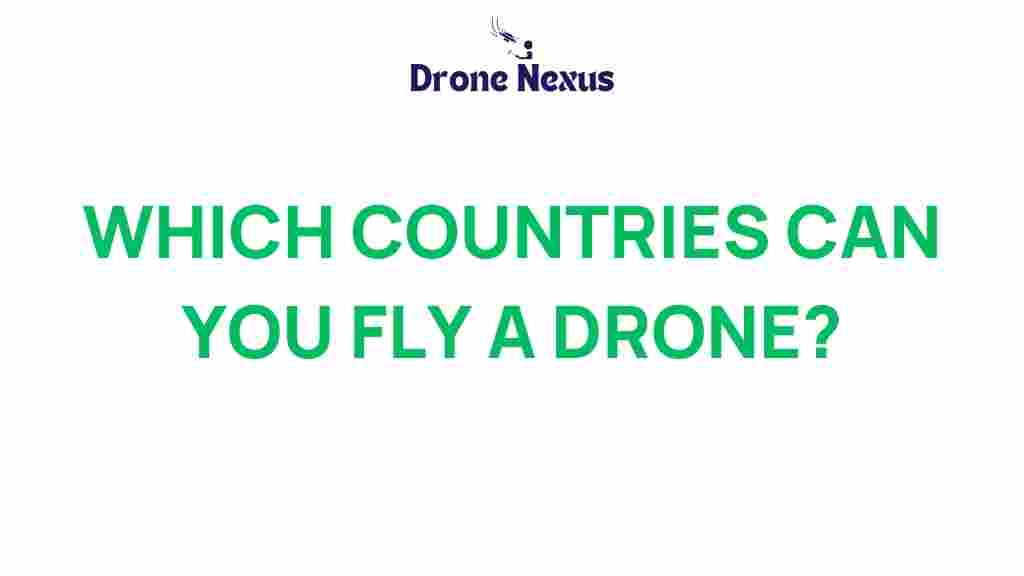Drone Regulations: Which Countries Allow You to Fly?
The rise of drones has transformed various industries, from photography to agriculture, offering unprecedented opportunities for innovation. However, with this growth comes the necessity for drone regulations that ensure safety and compliance. Understanding these regulations is crucial for drone enthusiasts and professionals alike. In this article, we will explore drone regulations across different countries, the requirements for flying legally, and tips for navigating these rules effectively.
Understanding Drone Regulations
Drone regulations vary significantly from country to country, reflecting different safety concerns, privacy issues, and airspace management needs. The primary reasons for these regulations include:
- Ensuring public safety
- Protecting privacy
- Managing air traffic and preventing collisions
- Promoting responsible usage of unmanned aerial vehicles (UAVs)
Before flying a drone, it’s essential to familiarize yourself with the specific regulations of the country you’re in. Below, we outline the regulations for several key countries.
United States
In the U.S., the Federal Aviation Administration (FAA) governs drone operations. Here are the key regulations:
- Drones must weigh less than 55 lbs for recreational use.
- Fly below 400 feet and within visual line of sight.
- Do not fly over people or moving vehicles.
- Register your drone if it weighs more than 0.55 lbs.
- Obtain a Remote Pilot Certificate if flying commercially.
For more details, check the FAA’s official website: FAA Drone Regulations.
Canada
In Canada, drone regulations are administered by Transport Canada. Key points include:
- All drones must be registered, regardless of weight.
- Drone pilots must pass an online exam if flying for commercial purposes.
- Fly at a maximum altitude of 400 feet and keep it within visual line of sight.
- Do not fly within 9 km of an airport or heliport without special permission.
For further information, visit the Transport Canada website: Transport Canada Drone Safety.
United Kingdom
The UK has a comprehensive set of drone regulations managed by the Civil Aviation Authority (CAA). Important regulations include:
- Drones over 250 grams must be registered with the CAA.
- Pilots must pass an online theory test to obtain a Flyer ID.
- Do not fly above 400 feet or within 150 meters of a congested area.
- Always keep a minimum distance of 50 meters from people and property.
Australia
In Australia, the Civil Aviation Safety Authority (CASA) regulates drone usage. Key points include:
- Drones must be under 2 kg for recreational use.
- Fly below 120 meters and maintain a visual line of sight.
- Do not fly near emergency operations or in controlled airspace without permission.
- All commercial operators must hold a Remote Pilot License (RePL).
European Union
With the implementation of EU Regulation 2019/947, the European Union has standardized drone regulations across member states. Key elements include:
- Drones are categorized into Open, Specific, and Certified categories based on risk.
- Pilots must register and obtain a European drone pilot license for specific and certified categories.
- Fly within visual line of sight and below 120 meters.
- Maintain a safe distance from people and property.
Step-by-Step Process for Flying Drones Legally
To ensure you fly your drone legally and safely, follow this step-by-step process:
- Research Local Regulations: Before traveling or flying in a new location, research the local drone regulations. This includes weight limits, registration requirements, and no-fly zones.
- Register Your Drone: If required, register your drone with the appropriate authority. This may involve providing details about your drone and paying a fee.
- Obtain Necessary Licenses: Determine if you need a remote pilot certificate or license to operate your drone, especially for commercial use.
- Conduct Pre-Flight Checks: Before flying, conduct thorough pre-flight checks to ensure that your drone is in good working condition.
- Respect Privacy: Always be aware of privacy concerns and avoid flying over private property without permission.
- Stay Informed: Regulations can change. Stay informed about updates to drone regulations in your area.
Troubleshooting Common Issues with Drone Regulations
Even with a good understanding of drone regulations, you may encounter issues. Here are some common problems and solutions:
Problem: Confusion Over No-Fly Zones
Solution: Use drone apps or websites that provide maps of no-fly zones. Always check for temporary flight restrictions (TFRs) before flying.
Problem: Registration Delays
Solution: Register your drone well in advance of your intended flight. Ensure you have all necessary documentation ready when you apply.
Problem: Forgetting to Renew Your License
Solution: Set reminders for license renewal dates. Many countries require periodic renewal of drone pilot licenses.
Problem: Misunderstanding Local Regulations
Solution: Contact local aviation authorities or join local drone clubs for guidance on specific regulations in your area.
Conclusion
As the popularity of drones continues to grow, understanding drone regulations becomes increasingly important for safe and responsible flying. Each country has its own set of rules designed to ensure safety, privacy, and efficient airspace management. By familiarizing yourself with these regulations and following the necessary steps to fly legally, you can enjoy the many benefits that drone technology offers.
Always remember to stay informed about the latest updates to drone regulations and be a responsible pilot. Safe flying!
For more comprehensive resources on drone flying, check out this guide to drone safety.
This article is in the category Safety and created by DroneNexus Team
